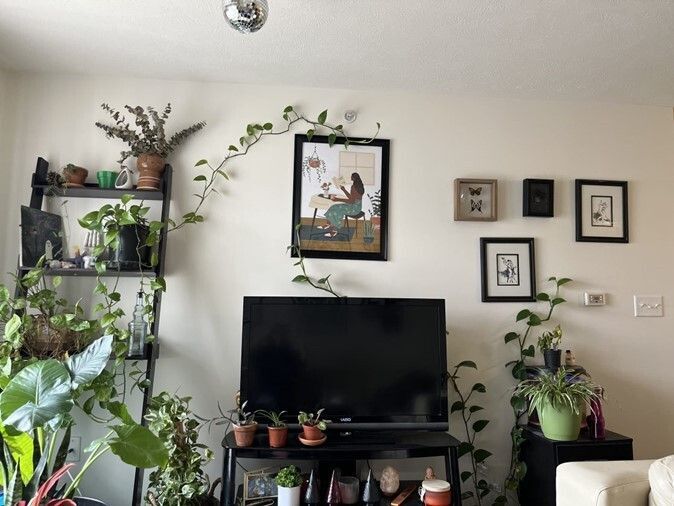
If you’re like me—a bit of a wimp when it comes to the cold—Nebraskan winters might not be for you. Often times during the winter months, I find myself longing for sunshine and greenery. Others might find the winter landscape beautiful but to me, it’s dull and dreary, signifying months of unbearable, unkind scenery. It was this yearning for warmth and color that sparked my passion for houseplants two years ago.
Winter is the perfect time to try your luck with houseplants. With little to do outside, nurturing houseplants during the cold months can give you something fun and interesting to do, spark your creativity and boost your serotonin levels at the same time.
With over 50 houseplants of all different varieties in my collection, I’m still nowhere close to an expert on the topic. However, with practice and effort, I’ve been able to create environments for my houseplants to thrive. They give my home a burst of color and are definitely a conversation piece.
Tips for Successful Houseplants
Do some research before you even step foot into a nursery. Knowing what a plant needs to thrive before you buy it will help prevent frustration and disappointment down the road. In addition, most nursery plants come with a tag that offers basic care instructions. These guidelines should be enough to get you started, and then you can always Google the name of your new plant for more information.
Build a routine. Having a watering routine was the most helpful thing I did for my plant care. I water the needy plants twice a week (typically Tuesdays and Thursdays), the drier plants once a week, and then my succulents once a month. If it’s hard for you to remember your watering schedule, write your watering dates on a calendar so you can keep track of them more easily.
Don't be afraid to prune your plants. The first time I cut my houseplants back, I was shaking with fear that one snip of my scissors would prove to be lethal. Plants are typically more resilient than you would think. That said, do some research before you attempt to cut back your houseplants so you know exactly where and how to prune.
Chop and prop. Certain cuttings (monstera, pothos and philodendron, for example) can be placed in a glass of water to root for propagation, giving you a whole new baby plant for free!
Don’t be afraid to experiment. If something doesn’t seem to be working, don’t be afraid to try something new. Maybe the plant needs new soil, or maybe it needs to be watered more or less.
Houseplants for Beginners
Pothos. One of the easiest houseplants to take care of, this vine-like tropical plant thrives best in indirect light with moist but well-drained soil. Its heart-shaped leaves give it attractive foliage.
Spider plant. A fast-growing plant with bladed grass-like leaves, spider plants thrive in indirect sunlight with moderate watering.
Monstera. A group of plants with great leaf structure diversity, monstera are sensitive to overwatering and prefer the soil to dry between watering. They thrive in indirect light with ample humidity.
Snake plant. One of the most popular and hardy houseplants, the stiff upright leaves of the snake plant can range from 5 inches to 8 feet. With moderate light and watering requirements, some people classify them as “indestructible.”
Aloe. A cactus-like, dry climate plant, aloe vera thrives with at least six hours of direct sunlight a day and very little water. In fact overwatering can be lethal for aloe vera.

